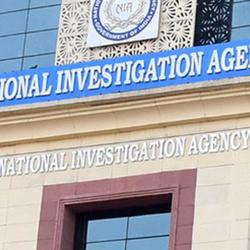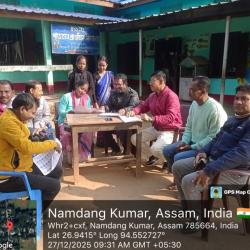The Assam College Teachers Associations’ DR College unit in collaboration with Vox Populi and NEADS, NGOs, organised a state level workshop on River Dams at DR College auditorium yesterday. The open session of the workshop was presided over by Hem Phukan, senior lecturer of the college. In the0 workshop Ravindranath, member of river basin friends and Director of Rural Voluntary Centre, Neeraj Vagholikar, noted columnist on environmental and infrastructural issues and member of Kalpavriksh, a national environmental research group and Girin Chetia, Director of NEADS presented their keynote address. The workshop was organized to spread awareness among people regarding the aftermath of the big dam.
Speaking on the occasion Neeraj Vagholikar said that the Expert Committee constituted by the Govt. of Assam with experts from IIT Guwahati, Dibrugarh University and Gauhati University, to study the downstream impacts of the project, in their Interim recommendations in 2009 asked the government to stop work pending completion of the report. But they were ignored by the power company and both the State and Central governments. In their final report submitted in June 2010 this committee has recommended that: “The selected site for the mega dam of the present dimension was not appropriate in such a geologically and seismologically sensitive location, therefore, it is recommended not to construct the mega dam in the present site. He also said that the drastic daily variation in river flows which will take place after these dams are commissioned, particularly in winter is a matter of grave concern. For example, the average winter flow in the Subansiri river in its natural state is approximately 400 cubic meters per second. But after the commissioning of the 2,000 MW Lower Subansiri project, flows in the Subansiri river in winter will fluctuate drastically on a daily basis from 6 cumecs for around 20 hours(when water is being stored behind the dam) to 2560 cubic meters per second for around 4 hours when the water is released for power generation at the time of peak power demand in the evening hours. Thus the river will be starved for 20 hours and then flooded for 4 hours with flows fluctuating between 2 percent and 600 percent of normal flows on a daily basis. The downstream livelihoods and activities likely to be impacted by this unnatural flow fluctuation include: fishing, flood-recession agriculture (e.g. mustard), river transportation and livestock rearing in grasslands for dairy-based livelihoods. The natural flow pattern of a river is like its ‘heart beat’ and alternate starving and flooding of these major rivers on a daily basis is a threat to the ecological and social security of the Brahmaputra floodplains.
On the issue whether the dam will withstand the earthquake, Girin Chetia of NEADS remarked that the issue of whether the water reservoir itself can induce seismic activity is also an important matter. There is a very crucial risk to the downstream areas even if the dam stands intact. In October 1963, the Vaiont dam in Italy, one of the world’s tallest, set off earthquakes as soon as its reservoir began to fill and about two minutes later, the town of Longarone was leveled and almost all of its 2,000 inhabitants killed.
Ravindranath of RVC opined that a large number of the hydropower projects in the Northeast are now being handed over to the private sector and India’s new Hydropower Policy (2008) allows developers to sell 40% of their saleable electricity on a merchant basis. Merchant sales allow developers to sell power at higher prices in the open market Thus, allowing a private company to sell power in the open market can lead to huge profits. He further said that when government is saying that they can control flood with the help of dams but in the Northeast, even as per official plans, most projects do not have an explicit flood moderation component, thus there being no question of these being able to effectively moderate floods. Out of the 130 plus hydropower agreements signed in Arunachal Pradesh, only one project on the Dibang river is officially a ‘multipurpose’ project. Major hydropower projects in the lower reaches of several rivers such as the Siang, Lohit and Subansiri are not multipurpose projects and have negligible flood moderation components, even as per the admission of project authorities. Ravindranath further commented that NEEPCO AND NHPC are two white elephants and to sustain them the government are undertaking such disastrous steps as construction of big dams even at the stake of risking the lives of its people. The Brahmaputra valley is one of the most prosperous river basin of South-east Asia and construction of big dam will definitely spell a death knell on the valley. Though power is indispensible for development but construction of big dam is not the only remedy for development. The government should consider other alternatives such as coal thermal power plant for power generation.
- 9443 reads










Add new comment